Succulents are beloved for their unique shapes, low-maintenance care, and ability to thrive in dry conditions. However, one of the most common mistakes succulent owners make is overwatering. While these drought-tolerant plants can survive with little moisture, too much water can quickly lead to their decline.
Recognizing the early signs of overwatered succulents is crucial for preventing irreversible damage and preserving the health of your collection. In this article, we’ll explore what happens when succulents receive excess water, how to identify symptoms of overwatering, and practical steps to save your plants.
Why Are Succulents Sensitive to Overwatering?
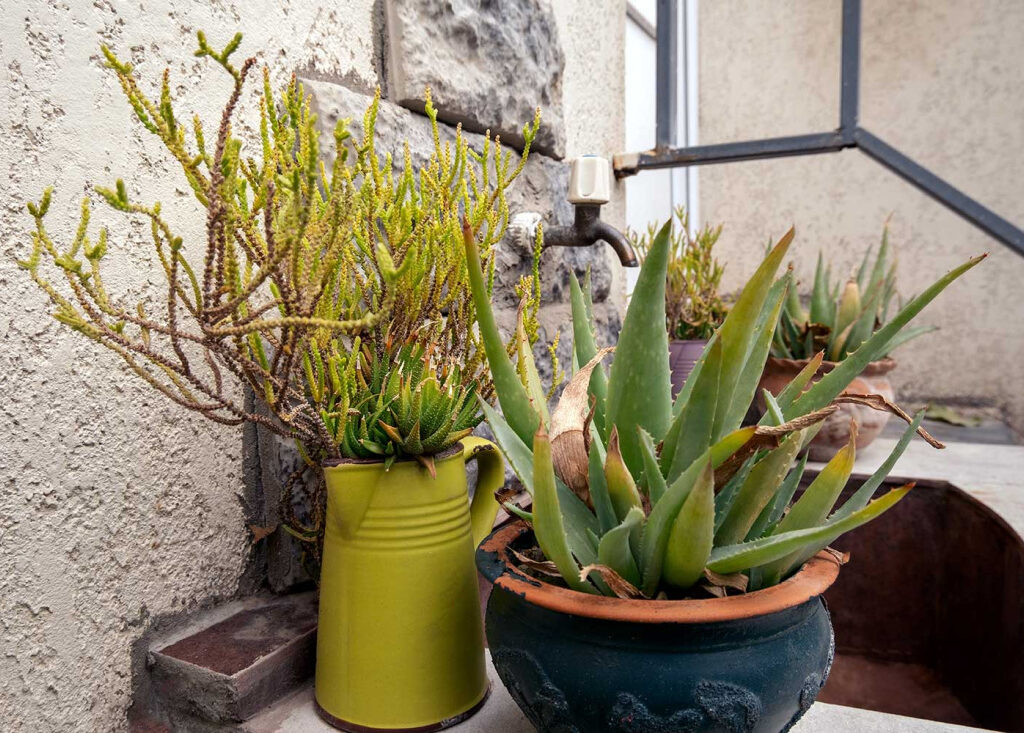
Succulents, by nature, are adapted to arid environments where water is scarce. Their fleshy leaves, stems, and roots store water, allowing them to endure dry spells for extended periods. Unlike tropical houseplants that prefer consistently moist soil, succulents require their soil to dry out between waterings.
When succulents receive too much water:
- Their roots become waterlogged.
- Oxygen is displaced from the soil.
- Roots begin to rot, leading to plant stress and decay.
- The plant’s internal water storage becomes overwhelmed, causing cells to burst.
This makes succulents particularly vulnerable to root rot and fungal diseases when overwatered.
Common Signs of Overwatered Succulents
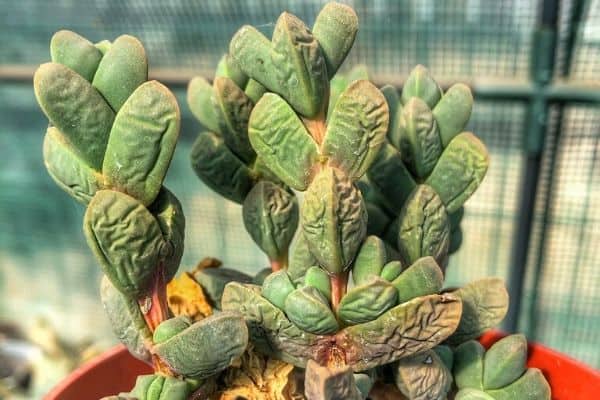
If you suspect your succulent might be receiving more water than it needs, look for these telltale symptoms:
1. Mushy, Soft, or Translucent Leaves
One of the earliest indicators of overwatering is a change in leaf texture. Healthy succulent leaves should feel firm and plump.
Signs to Watch For:
- Leaves turn soft and mushy to the touch.
- Translucent or water-soaked appearance.
- Leaves easily fall off with a slight touch.
Why This Happens:
Excess water causes plant cells to swell and burst, leading to mushy, semi-transparent tissue.
2. Yellowing Leaves

While occasional yellow leaves may occur naturally as plants shed older growth, widespread yellowing, especially of new leaves, is a warning sign of overwatering.
Key Symptoms:
- Leaves change from green to pale yellow.
- Yellow leaves often feel soft or limp.
- May appear alongside mushy spots.
Cause:
Oxygen deprivation in the soil stresses the plant, preventing nutrient uptake and causing chlorosis (yellowing).
3. Swollen, Split, or Drooping Leaves
Overhydrated succulents store excess moisture in their leaves and stems, causing them to bloat.
Signs Include:
- Leaves appear unusually large or swollen.
- Leaf surfaces may split or develop blisters.
- Entire rosettes or stems droop under the weight of waterlogged tissue.
Why:
Succulents’ natural water storage cells become overfilled, straining the plant’s structure.
4. Wilting Despite Moist Soil
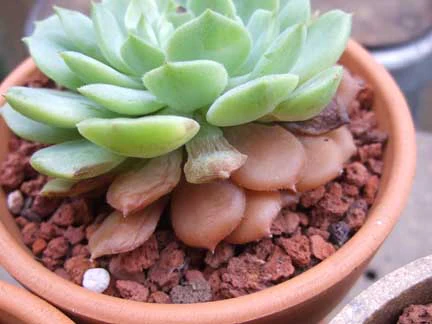
It’s counterintuitive, but overwatered succulents can wilt while sitting in wet soil. This happens because root rot hampers the plant’s ability to absorb water properly, causing it to wilt even though moisture is abundant.
Warning Signs:
- Limp, droopy leaves and stems.
- Soil feels soggy, yet the plant appears dehydrated.
5. Black or Brown Soft Spots (Stem and Root Rot)
Advanced overwatering leads to root and stem rot — often visible as dark, soft, sunken spots on stems, leaves, or at the soil line.
Symptoms Include:
- Brown or black mushy areas on the plant base.
- An unpleasant, musty odor from rotting roots.
- Stems collapsing at the base.
Why It’s Serious:
Rot can spread rapidly, killing the plant if not addressed immediately.
6. Leaves Falling Off Easily
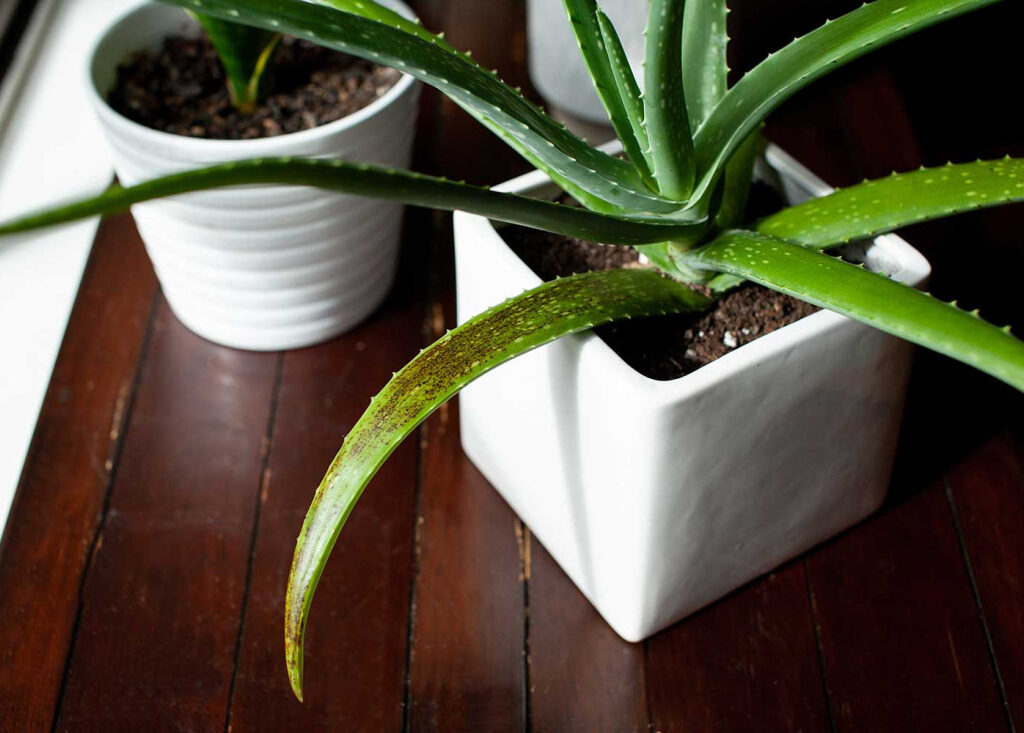
While healthy succulents occasionally drop old leaves, overwatering accelerates leaf drop.
Look For:
- Leaves falling off with the slightest touch.
- Large numbers of leaves detaching at once.
Cause:
Weak, waterlogged stems and petioles (leaf stalks) lose their strength and integrity.
7. Mold or Fungal Growth in Soil
Persistent wet soil creates a breeding ground for mold, mildew, and fungus.
Signs of Trouble:
- White, gray, or black fuzzy patches on soil surface.
- Fungus gnats (small flying insects) emerging from soil.
- Musty, sour smell in the pot.
Why:
Organic material decays quickly in damp soil, encouraging fungal outbreaks.
How to Confirm Overwatering: The Soil Test
If you notice any of the symptoms above, check the soil moisture level:
- Insert a finger or wooden stick 1–2 inches deep.
- If the soil feels damp days after watering, it’s a sign of poor drainage or excessive watering.
- Succulents prefer soil to dry completely before the next watering.
Alternatively, use a moisture meter to detect water levels at the root zone.
How to Save an Overwatered Succulent
If caught early, overwatered succulents can often be revived. Follow these steps:
1. Stop Watering Immediately
Allow the soil to dry completely before considering another watering.
2. Remove the Plant from Its Pot
Inspect the roots for rot:
- Healthy roots: firm and white.
- Rotted roots: brown, mushy, or black.
3. Trim Off Damaged Roots and Leaves
Use sterilized scissors to cut away affected parts.
4. Let the Plant Air-Dry
Place the plant in a dry, shaded area for 24–48 hours to heal cut surfaces and allow excess moisture to evaporate.
5. Repot in Fresh, Well-Draining Soil
Use a gritty, cactus-specific mix or a combination of:
- Potting soil
- Coarse sand
- Perlite or pumice
Choose a pot with drainage holes.
6. Water Sparingly
Wait at least 5–7 days after repotting before watering lightly.
How to Prevent Overwatering Succulents
Prevention is the best cure. Follow these practices to keep your succulents healthy:
- Water only when soil is dry.
During active growth, water when the top 2 inches of soil are dry. - Use fast-draining soil.
Avoid standard potting mixes that retain moisture. - Ensure proper drainage.
Always use pots with drainage holes. - Adjust watering with seasons.
Reduce watering in fall and winter when growth slows. - Avoid misting succulents.
They don’t absorb water through their leaves like tropical plants. - Place in bright, indirect sunlight.
Helps evaporate excess moisture and keep plants stress-free.
Conclusion
Overwatering is one of the most common and dangerous mistakes when caring for succulents. Recognizing early warning signs like mushy leaves, yellowing, wilting despite wet soil, black spots, and rapid leaf drop can help you intervene before irreversible damage occurs.
By understanding your succulent’s natural drought-adapted needs, adjusting your watering schedule, and providing well-draining soil and appropriate containers, you can ensure a thriving, resilient plant collection that brings beauty and tranquility to your home or garden.
Remember — when it comes to succulents, it’s better to underwater than overwater.
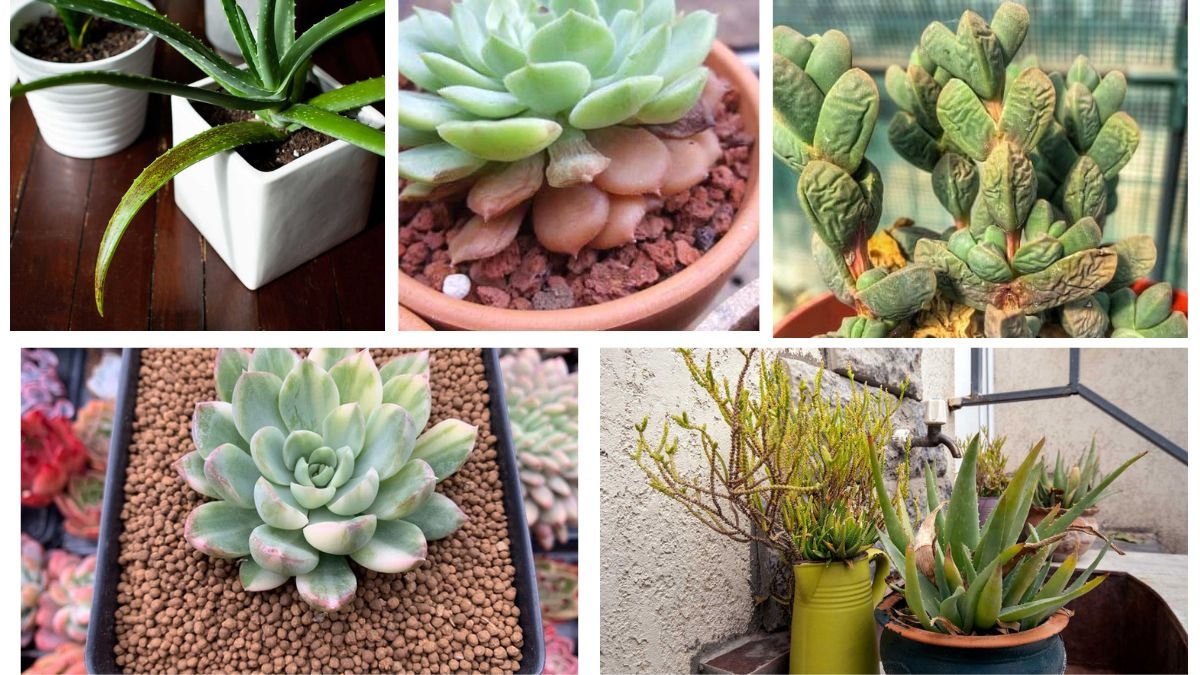



Leave A Comment